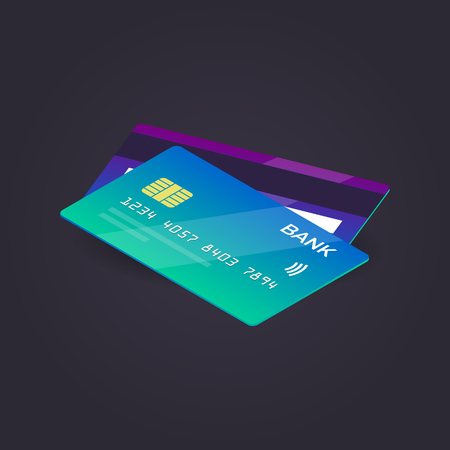1. Understanding Payment Gateways and Their Role
If you’re running an e-commerce business in the US, one of the first things you’ll need to figure out is how your customers will pay you. That’s where payment gateways come in. But what exactly are payment gateways, and why do they matter so much for online businesses?
What Is a Payment Gateway?
A payment gateway is a technology that lets your online store accept credit card, debit card, and other electronic payments securely. Think of it as the digital version of a cash register or credit card terminal, but for your website. It handles sensitive customer information, encrypts payment details, and communicates with banks to process transactions.
How Payment Gateways Work: Step-by-Step
| Step | What Happens |
|---|---|
| 1. Customer Checkout | The customer chooses items and goes to your website’s checkout page. |
| 2. Payment Info Entered | The customer enters their payment details (like credit card info). |
| 3. Data Encryption | The payment gateway encrypts the data for security. |
| 4. Transaction Request | The gateway sends the encrypted info to the payment processor or bank. |
| 5. Bank Response | The bank approves or declines the transaction. |
| 6. Confirmation | Your website shows the customer whether their payment went through. |
Why Payment Gateways Matter for US E-Commerce Businesses
Security: US consumers expect strong protection of their personal and financial data when shopping online.
Trust: Reliable gateways help build trust with customers by offering familiar and secure ways to pay.
Smooth Transactions: A good gateway ensures fast and easy checkouts, which can boost your sales.
Compliance: Many US regulations (like PCI DSS) require secure handling of credit card info, which gateways help you follow.
Main Functions of a Payment Gateway
- Authorize Payments: Confirms if the customer has enough funds or credit.
- Process Transactions: Moves money from the buyer to your account.
- Protect Data: Uses encryption and fraud detection tools to keep transactions safe.
- Integration: Connects with e-commerce platforms like Shopify, WooCommerce, or BigCommerce.
Key Takeaway:
A payment gateway is essential for any US-based online business because it makes online payments possible, keeps transactions secure, and helps you meet customer expectations for safety and convenience.
2. Key Features to Look for in a US Payment Gateway
Choosing the right payment gateway for your US-based e-commerce business is about more than just picking the first option you find. To make sure your online store runs smoothly and keeps your customers happy, here are the key features you should consider:
Security Standards
Your customers trust you with their payment information, so security has to be your top priority. Make sure the payment gateway is PCI DSS compliant—this is a must-have for handling credit card data safely. Also, look for features like fraud detection, tokenization, and data encryption.
| Security Feature | Why It Matters |
|---|---|
| PCI DSS Compliance | Keeps customer card data safe and helps you meet legal requirements. |
| Tokenization | Replaces sensitive info with secure tokens, reducing risk of data breaches. |
| Fraud Detection Tools | Helps spot suspicious activity and reduce chargebacks. |
| SSL Encryption | Makes sure all transactions are securely transmitted over the internet. |
Integration Options
The best payment gateways offer easy integration with popular e-commerce platforms like Shopify, WooCommerce, Magento, or BigCommerce. Check if they provide plugins or APIs that match your tech skills and business needs. Seamless integration saves you time and reduces headaches down the road.
Popular Integration Methods:
- Direct plugins for e-commerce platforms (e.g., Shopify App Store)
- User-friendly APIs for custom websites
- Hosted payment pages to keep things simple and secure
Settlement Times
Cash flow is crucial when you’re running an online business. Settlement time refers to how quickly you get your money after a sale. Some gateways pay out within 1-2 business days, while others may take longer. Faster settlements help you manage inventory and expenses more effectively.
| Gateway | Typical Settlement Time (US) |
|---|---|
| Stripe | 2 business days |
| PayPal | Instant to 1 business day (with fees), standard 1-3 days |
| Square | Next business day (instant available with extra fee) |
| Braintree | 2-3 business days |
Support for Popular US Payment Methods
Your gateway should support the ways Americans like to pay. In addition to major credit cards (Visa, MasterCard, American Express, Discover), consider options like Apple Pay, Google Pay, ACH transfers, and even Buy Now Pay Later services like Afterpay or Klarna. The more options you offer, the easier it is for customers to complete their purchase.
Commonly Supported Payment Methods:
- Credit & Debit Cards (Visa, MasterCard, Amex, Discover)
- Digital Wallets (Apple Pay, Google Pay)
- E-Checks / ACH payments (for B2B or recurring billing)
- Buy Now Pay Later (Afterpay, Klarna)
- PayPal & Venmo (especially popular among younger shoppers)

3. Comparing Popular Payment Gateway Providers
Choosing the right payment gateway for your US-based e-commerce business can feel overwhelming with so many options available. To help you make an informed decision, let’s take a closer look at four of the most popular payment gateways in the US: Stripe, PayPal, Square, and Authorize.Net. Each provider has its own strengths and weaknesses, so it’s important to understand how they compare.
Overview of Leading Payment Gateways
| Provider | Main Features | Pros | Cons |
|---|---|---|---|
| Stripe | Developer-friendly, customizable checkout, accepts international payments, supports subscriptions | Easy integration, transparent pricing, powerful API, great for tech-savvy businesses | Requires some technical knowledge, no in-person payment option out-of-the-box |
| PayPal | Trusted brand, simple setup, supports many currencies, offers PayPal Credit and Venmo | Instant brand recognition, buyer and seller protection, easy to add to any site | Higher fees for some transactions, redirects customers away from your site during checkout (unless using PayPal Pro) |
| Square | User-friendly dashboard, POS hardware available, online and offline payments, free online store tools | No monthly fees for basic use, great for brick-and-mortar plus online businesses, fast deposits | Mainly US-focused, limited global support compared to others, fewer advanced customization options |
| Authorize.Net | Long-established gateway, robust security features, flexible recurring billing options | Excellent fraud protection tools, accepts a wide range of payment types (credit cards, e-checks), strong customer support | Monthly fee required, setup can be more complex than other providers |
Key Takeaways When Comparing Providers
- Your Business Model: If you want full control over your checkout process and have developer resources, Stripe is highly customizable. For quick setup or if you’re just getting started, PayPal or Square could be easier.
- Fees: All providers charge transaction fees (usually around 2.9% + $0.30 per transaction), but there may be additional monthly charges or premium features—especially with Authorize.Net.
- User Experience: Pay attention to whether the gateway keeps shoppers on your site or sends them elsewhere to pay. Keeping everything on your site generally helps conversion rates.
- Integration: Make sure your chosen gateway works smoothly with your e-commerce platform (like Shopify or WooCommerce).
- Support & Security: Consider what level of customer support and fraud protection each provider offers—this can make a big difference as your business grows.
Tip:
If you expect to sell internationally or want to offer a variety of payment methods (including digital wallets like Apple Pay and Google Pay), double-check which gateways offer these options before making your final choice.
4. Evaluating Costs and Hidden Fees
When picking an online payment gateway for your US-based e-commerce business, it’s crucial to understand all the costs involved. Payment gateways often have different pricing models, and some come with hidden fees that can eat into your profits if you’re not careful. Here’s what you need to know before making your choice.
Main Types of Fees
Most payment gateways charge a mix of fees, so it’s important to look at the big picture—not just the headline rate. Here are the most common types of costs:
| Fee Type | Description | Typical Range |
|---|---|---|
| Setup Fee | A one-time fee to get started | $0–$200+ |
| Monthly Fee | Ongoing access or maintenance fee | $0–$30/month |
| Transaction Fee | Charged per sale, usually a percentage plus a fixed amount | 2.5%–3.5% + $0.10–$0.30 per transaction |
| Chargeback Fee | Fee for processing disputed payments | $15–$25 per chargeback |
Hidden Charges to Watch For
- Refund Fees: Some gateways keep the original transaction fee even when you issue a refund.
- Currency Conversion Fees: If you sell internationally, check if extra charges apply for converting currencies.
- Payout Fees: Some platforms charge for transferring funds to your bank account.
- Inactivity Fees: Rare, but possible—some providers charge if your account isn’t used regularly.
Comparing Popular US Payment Gateways (Sample Data)
| Gateway | Setup Fee | Monthly Fee | Transaction Fee |
|---|---|---|---|
| Stripe | $0 | $0 | 2.9% + $0.30 |
| PayPal | $0 | $0 (basic) | 2.9% + $0.30 |
| Authorize.Net | $49 | $25 | 2.9% + $0.30 (+ $0.10/batch) |
Questions to Ask Providers
- Are there any fees not listed on your pricing page?
- If I refund a customer, do I get the transaction fee back?
- Are there minimum monthly volume requirements?
TIPS:
- Add up all potential fees based on your expected sales volume.
- If you plan to grow fast, ask about enterprise or high-volume discounts.
5. Ensuring Compliance and Building Customer Trust
Why Compliance Matters for Your US E-Commerce Business
If you’re running an online store in the US, following rules and regulations isn’t just a box to check—it’s essential for protecting your customers and your business. One of the most important standards is PCI DSS (Payment Card Industry Data Security Standard). This set of requirements helps make sure that all companies processing, storing, or transmitting credit card information maintain a secure environment.
Main US Regulations for Payment Gateways
| Regulation/Standard | What It Means | Why It Matters |
|---|---|---|
| PCI DSS | Guidelines for handling credit card data safely | Reduces risk of data breaches and fraud |
| SOC 2 | Controls on how data is managed and protected | Ensures trust and transparency with customers |
| State Privacy Laws (e.g., CCPA) | Laws protecting consumers’ personal information | Keeps you compliant with local legal requirements |
How a Reliable Payment Gateway Builds Trust
Your customers want to feel safe when shopping on your site. If they see well-known, secure payment options, they’re more likely to complete their purchases. Payment gateways that openly display security badges or offer multi-factor authentication send a strong message: “Your information is safe here.” Plus, reliable gateways often include tools for detecting and preventing fraud, which adds another layer of protection.
Trust-Building Features to Look For:
- SSL Encryption: Protects sensitive information during checkout.
- Fraud Detection Tools: Identifies suspicious activity before it becomes a problem.
- Visible Security Seals: Reassures shoppers with familiar trust signals like Norton Secured or Verified by Visa.
- User-Friendly Dispute Process: Helps resolve payment issues quickly and fairly.
- Transparent Fees: No hidden charges means no surprises for you or your customers.
The Takeaway: Compliance + Trust = Growth
Choosing a payment gateway that’s compliant with US regulations and focused on customer security does more than keep you legal—it strengthens your reputation, encourages repeat business, and helps your e-commerce brand stand out in the crowded US market.


